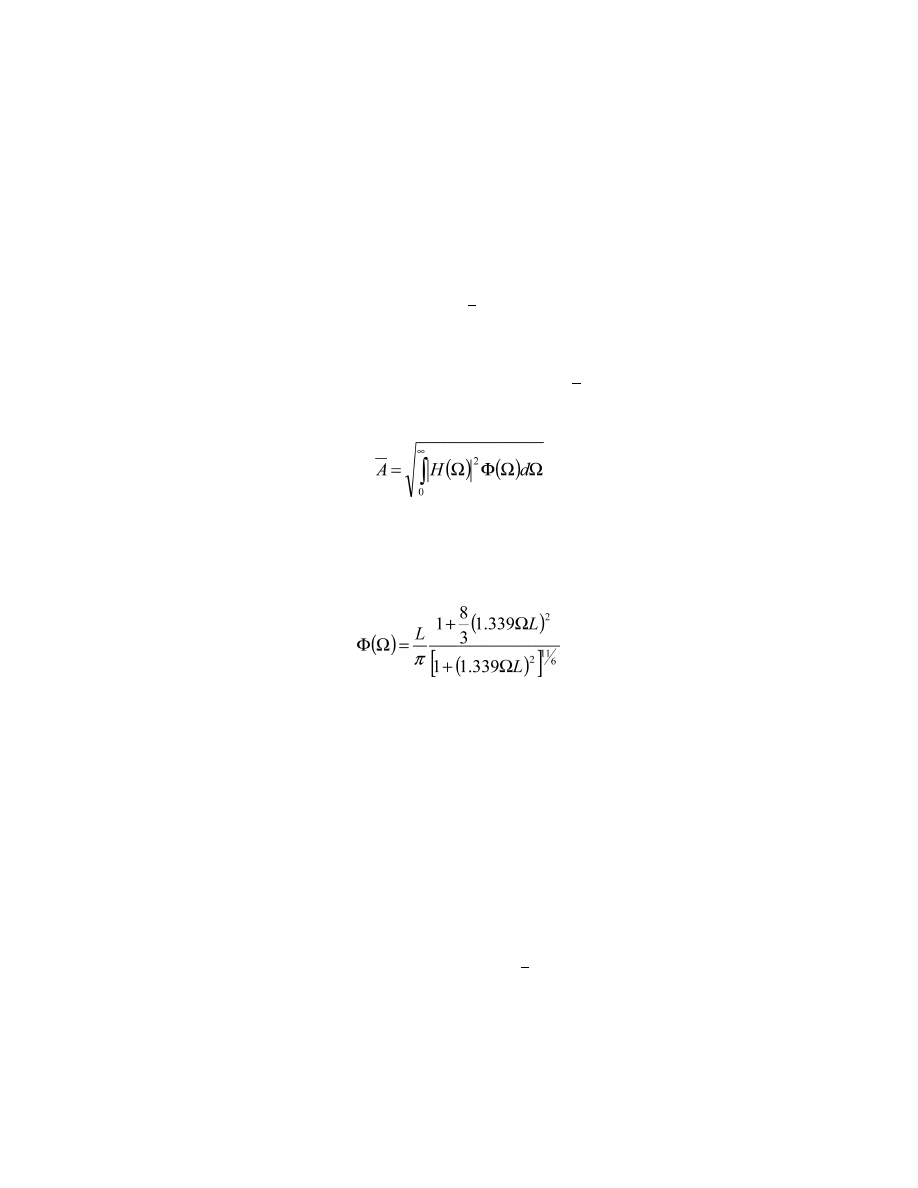
240
14 CFR Ch. I (1–1–19 Edition)
§ 25.341
rigid body motions. The limit loads
must be determined for all critical alti-
tudes, weights, and weight distribu-
tions as specified in § 25.321(b), and all
critical speeds within the ranges indi-
cated in § 25.341(b)(3).
(1) Except as provided in paragraphs
(b)(4) and (5) of this section, the fol-
lowing equation must be used:
P
L
= P
L
¥
1
g
±
U
σ
A
¯
Where—
P
L
= limit load;
P
L
¥
1g
= steady 1g load for the condition;
A
= ratio of root-mean-square incremental
load for the condition to root-mean-
square turbulence velocity; and
U
σ
= limit turbulence intensity in true air-
speed, specified in paragraph (b)(3) of this
section.
(2) Values of
A
must be determined
according to the following formula:
Where—
H(
W
) = the frequency response function, de-
termined by dynamic analysis, that re-
lates the loads in the aircraft structure
to the atmospheric turbulence; and
F
(
W
) = normalized power spectral density of
atmospheric turbulence given by—
Where—
W
= reduced frequency, radians per foot; and
L = scale of turbulence = 2,500 ft.
(3) The limit turbulence intensities,
U
σ
, in feet per second true airspeed re-
quired for compliance with this para-
graph are—
(i) At airplane speeds between V
B
and
V
C
:
U
σ
= U
σ
ref
F
g
Where—
U
σ
ref
is the reference turbulence intensity
that varies linearly with altitude from 90
fps (TAS) at sea level to 79 fps (TAS) at
24,000 feet and is then constant at 79 fps
(TAS) up to the altitude of 60,000 feet.
F
g
is the flight profile alleviation factor de-
fined in paragraph (a)(6) of this section;
(ii) At speed V
D
: U
σ
is equal to
1
⁄
2
the
values obtained under paragraph
(b)(3)(i) of this section.
(iii) At speeds between V
C
and V
D
: U
σ
is equal to a value obtained by linear
interpolation.
(iv) At all speeds, both positive and
negative incremental loads due to con-
tinuous turbulence must be considered.
(4) When an automatic system affect-
ing the dynamic response of the air-
plane is included in the analysis, the
effects of system non-linearities on
loads at the limit load level must be
taken into account in a realistic or
conservative manner.
(5) If necessary for the assessment of
loads on airplanes with significant non-
linearities, it must be assumed that
the turbulence field has a root-mean-
square velocity equal to 40 percent of
the U
σ
values specified in paragraph
(b)(3) of this section. The value of limit
load is that load with the same prob-
ability of exceedance in the turbulence
field as
A
U
σ
of the same load quantity
in a linear approximated model.
(c)
Supplementary gust conditions for
wing-mounted engines.
For airplanes
equipped with wing-mounted engines,
the engine mounts, pylons, and wing
supporting structure must be designed
VerDate Sep<11>2014
12:50 Apr 30, 2019
Jkt 247046
PO 00000
Frm 00250
Fmt 8010
Sfmt 8010
Y:\SGML\247046.XXX
247046
ER11DE14.025</GPH>
ER11DE14.026</GPH>
spaschal on DSK3GDR082PROD with CFR